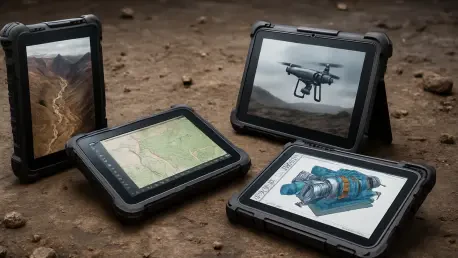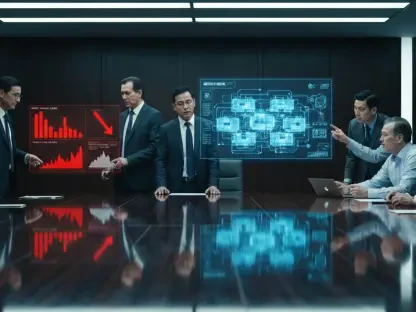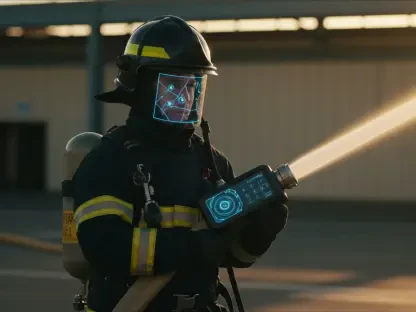I’m thrilled to sit down with Oscar Vail, a renowned technology expert with a deep passion for cutting-edge innovations in fields like quantum computing, robotics, and open-source projects. With his finger on the pulse of the tech industry, Oscar brings unparalleled insight into the world of rugged devices and unique gadgets. Today, we’re diving into the fascinating realm of the latest rugged tablet from a prominent manufacturer, exploring its unconventional features like a built-in projector and camping light, its robust design for outdoor use, and the impressive engineering behind its massive battery. Our conversation uncovers the inspiration, challenges, and user-focused innovations that make this device stand out in a crowded market.
What inspired the creation of a rugged tablet with such unique features like a built-in projector and camping light?
The inspiration really came from understanding the needs of users who live and work in challenging environments—think adventurers, field workers, or even construction professionals. These are folks who need a device that can withstand harsh conditions while offering more than just basic functionality. The idea was to create a tablet that’s not only tough but also a multi-tool for real-world scenarios. Adding a projector stemmed from the desire to bring entertainment or presentations to remote locations, like a campsite or a job site. The camping light, on the other hand, was about practicality—lighting up a dark area during an outdoor expedition or emergency. We wanted to push the boundaries of what a tablet can do beyond the screen.
How did you approach balancing durability with usability in the design of such a heavy and thick device?
Designing a rugged tablet like this was a tightrope walk. At 1.5 kilograms and nearly 30 millimeters thick, it’s a beast, no doubt. We prioritized durability by using a rigid plastic casing that can handle drops from significant heights and paired it with IP68 and IP69K certifications for dust and water resistance. Usability came down to thoughtful additions like a 180-degree adjustable metal kickstand for hands-free use and ensuring the device felt secure to hold despite its weight. We also focused on sealing critical areas like ports with rubber flaps to protect against the elements. The challenge was making sure it didn’t feel like you’re lugging around a brick—every element was tested to ensure it still functions intuitively in tough conditions.
What led to the decision to integrate a projector into a tablet, and how did you ensure its quality for casual viewing?
The projector was about redefining portability and versatility. We saw a gap in the market—people wanting to share content or enjoy movies in unconventional settings without carrying extra gear. So, we built in a projector with 200 lumens brightness and 1080P resolution, which is a step above other tablets in this niche. Our focus was on making it user-friendly for casual viewing, especially in dim environments where it shines. Features like automatic keystone correction and autofocus were critical; they take the hassle out of setup by adjusting the image automatically. We tested it extensively in various scenarios to ensure it could deliver a clear, large projection—up to 120 inches—making it perfect for impromptu movie nights or quick presentations.
The camping light with ultra-bright LEDs is another standout. What was the thought process behind including this feature?
The camping light was born from the idea of utility in extreme conditions. With 606 LEDs pumping out 400 lumens, it’s powerful enough to illuminate a campsite or a workspace in pitch darkness. We envisioned users—campers, emergency responders, or workers on night shifts—needing a reliable light source integrated into their device. It’s not just a gimmick; it’s a practical tool with modes like SOS and flashing for emergencies. Controlling it via a proprietary app allows for granular brightness adjustments and ensures the feature is seamlessly tied to the tablet’s ecosystem, making it intuitive to toggle on when you need it most.
With a massive 30,000 mAh battery, how did you manage to incorporate such capacity while maintaining the device’s functionality?
Fitting a 30,000 mAh battery into a tablet was an engineering feat. We had to redesign the internal layout to accommodate this monstrous cell without compromising other components like the projector or chipset. It’s why the tablet is thicker and heavier, but that capacity gives users up to 112 days of standby or nearly 8 hours of projection time. We paired it with 120W fast charging, which tops it up in just over 2.5 hours—an impressive feat for a battery this size. The reverse charging feature was a bonus; it turns the tablet into a power bank, so you can juice up other devices on the go. Rigorous testing ensured it could handle extreme usage cycles without degrading, making it a reliable companion for long outdoor stints.
The display has a 90Hz refresh rate but faces criticism for outdated bezels and poor contrast. What influenced the choice of this screen technology?
Choosing the 11-inch IPS LCD with a 90Hz refresh rate was a balance of cost, durability, and performance. We wanted a screen that could keep up with smooth scrolling and basic multimedia while being tough enough for outdoor use—hence the Gorilla Glass 5 protection. The thicker bezels and contrast issues are trade-offs; we prioritized ruggedness over cutting-edge display tech to keep the device affordable and resilient. In harsh sunlight or dusty conditions, visibility and durability matter more than razor-thin bezels. That said, we’re always listening to feedback and looking at how we can improve screen quality in future iterations without sacrificing the core rugged ethos.
What’s your forecast for the future of rugged devices with multifunctional features like projectors and lights?
I think we’re just scratching the surface with rugged devices. As technology advances, I foresee even more integration of niche tools—think advanced sensors for environmental data, modular attachments, or even augmented reality features for fieldwork. The demand for devices that can do more than one thing, especially in extreme conditions, is growing. Projectors and lights are a start, but I predict we’ll see rugged tablets and phones becoming true all-in-one solutions for professionals and adventurers alike. Battery tech will keep improving, allowing for even crazier features without the bulk. It’s an exciting space, and I can’t wait to see how manufacturers push the limits in the next few years.









